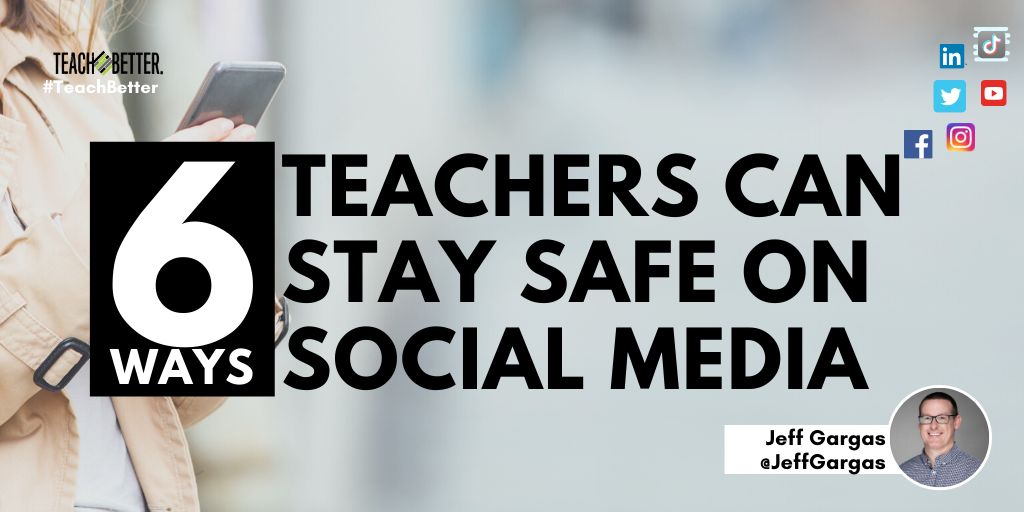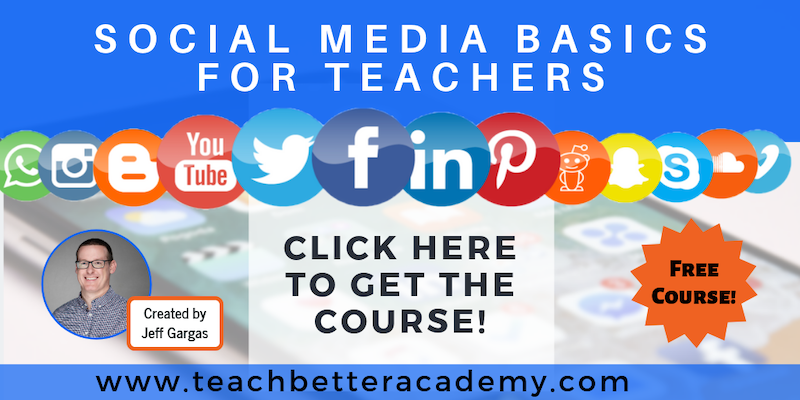TL;DR:
- Social media is a great tool, but it needs to be used safely.
- Six tips to stay safe on social media as an educator.
Ok, at this point, I think we all know I’m a fan of social media. And if you’ve been connected with us for a while, you know that I love working with teachers on how they can incorporate social media in their classrooms, schools, districts, and communities.
From using it to engage your students inside your classroom, to sharing your awesomeness with your community, to building your PLN to connect and grow with educators all over the world, social media can be a great resource and place to be better every day.
Social media can be a great resource and place to be better every day. Click To Tweet
However, it can also be a place you can quickly damage your career, your school’s reputation, and even your personal life. I promote the use of social media, but I only do that with the underlying messages of: 1) being smart and staying safe, and 2) only using it if it makes sense for YOU.
So, if you’ve got this far, and you’re considering using social media in your classroom, your district, or to build your PLN, here are 6 ways you can stay safe.
Social Media Safety Tip #1: Read the terms of service agreements.
Yes, actually read them. Understand what you’re agreeing to when you click that “sign up” button. Read up on what you’re allowing them to access, how they use information, and what each platform does to help you keep things private.
Social Media Safety Tip #2: Check your privacy settings.
Speaking of privacy, check your settings. Most social media platforms provide the ability to keep your profile/page/account fairly private and secure. They only allow certain people to view what you share. Research your options, and set things to where you feel comfortable.
Social Media Safety Tip #3: Understand your district’s social media policy.
If you are using social media in any way connected to your classroom, school, district, community, or students, abide by your district’s social media policy and guidelines. If your district does not have a social media policy in place, do not start using it. Instead, speak with your admin team and get guidelines in place first.
[scroll down to keep reading]Social Media Safety Tip #4: Set up separate accounts for personal and professional use.
I know plenty of people on both sides of this argument. I fall here: If you’re using a social media profile with your students, and are also on that platform for personal use, I strongly suggest creating a separate account for your classroom/school. This will allow you to keep your personal life separate.
Now, if you’re not interested in sharing personal stuff, or you don’t mind your students/stakeholders seeing personal posts, then you’re good to use the same account. Just think it through and stick to your plan for what you should or should not share.
Social Media Safety Tip #5: Acquire parental consent forms.
I harp on this one a lot. Even if your district has processes in place to get parental consent, I always recommend having a permission form specific to your classroom. This is not a requirement per-say, but it is a good second layer of protection.
Social Media Safety Tip #6: Think before you post.
I always go back and forth on this one, because I feel like it should be common sense. But the fact is, it’s important enough to mention any time we talk about social media use by teachers. Think thoroughly about what you post and where you post it.
If you’re angry, think twice…then think again…and then probably don’t post it. Don’t ever post criticism of a student, parent, colleague, or your district.
Consider all angles from which your post could be received, and all the ways in which it could be viewed. If you’re worried someone could be offended, don’t post it.
I am a fan of social media, plain and simple. And I am definitely a fan of its use in your classroom…but ONLY if you feel like it’s a good fit for you and your students. And ONLY if you feel comfortable about your safety. I am all for getting out of your comfort zone, but when it comes to protecting yourself on social media, I want you to feel safe. If you don’t, you won’t get its full value.
So as you dive into the idea of social media in your classroom or school, take these 6 things into account, stay safe, and have fun!
About Jeff Gargas
Jeff Gargas is the COO and co-founder of the Teach Better Team, and co-author of the Teach Better book. Prior to co-founding Teach Better Team, Jeff was the owner of ENI Multimedia, an online marketing firm, where he worked with entrepreneurs and small businesses, assisting them with web design, social media, content marketing, and brand awareness.
Prior to all of this, Jeff was an adjunctive professor at Kent State University and spent 10+ years in the music industry. He has spoken at conferences around the country, and has successfully promoted more than 500 events and launched 7 businesses in a variety of industries.
Jeff is passionate about music, and enjoys spending time with his family as often as possible. He is also a member of the Teach Better Speakers Network.




